Equipment
The “real” firsts of the golf industry
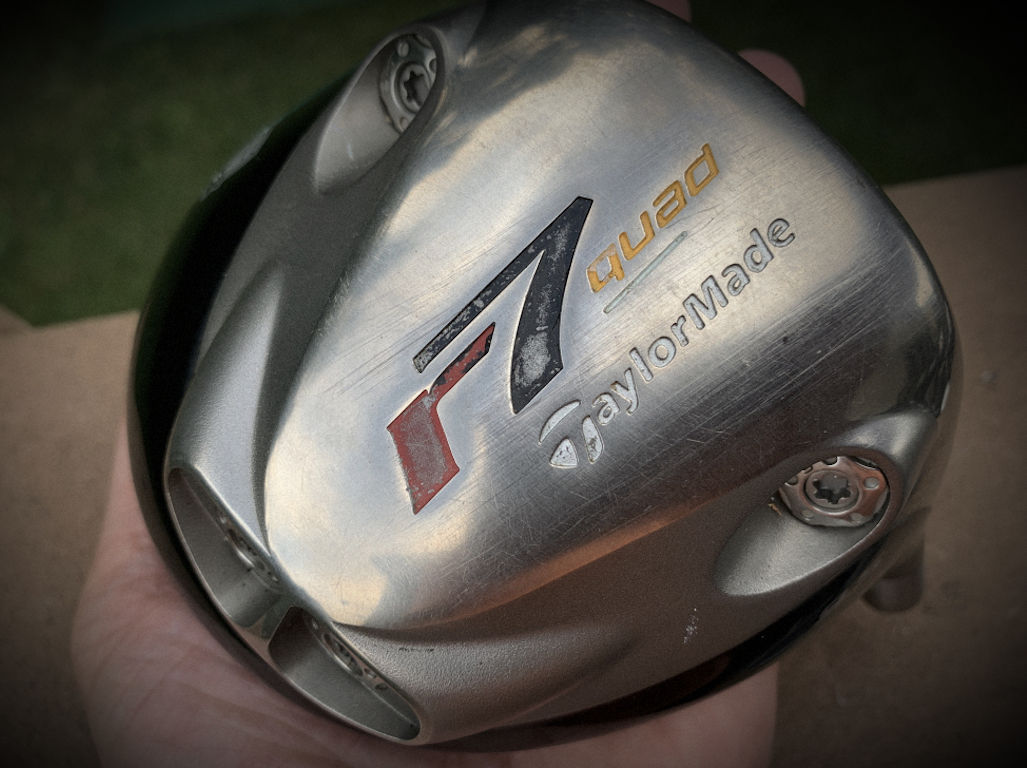
Any time a new club is introduced, the phrase “for the first time ever…” is usually not far behind. In some groundbreaking cases, the statement is completely true and applies to the entirety of the modern golf industry, while in other cases it’s only a “first” for that particular manufacturer—so watch for the asterisk.
This ultimately begs the question: What were the true firsts of modern golf technology, and how did they change the direction of design?
After some in-depth research here is my list of true firsts.
The first metal driver: TaylorMade Original (1979)
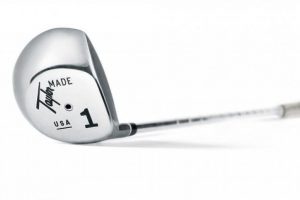
As the story goes, Gary Adams took out a $24,000 loan against his house to found TaylorMade Golf. The focus of this new endeavor was to create a driver made from metal and to make persimmon a thing of the past. The first product to market was a 12-degree metal driver; the very first of it’s kind. It still took more than a decade to make persimmon obsolete, but as they say, the rest is history.
Moveable weight: TaylorMade R7 (2004)
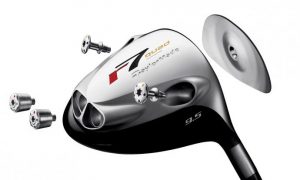
TaylorMade engulfed the driver space when it launched the 300 Series metal woods and went on an ever further tear when it introduced the 500 series (they skipped the 400 names). Interesting fact—the number four is mostly avoided in global marketing because “four” is pronounced almost exactly the same as the word “death” in Chinese. It’s the same reason Callaway went from FT3 to FT5.
When the R7 Quad debuted, it was a game-changer because it was the very first driver to offer the consumer easily adjustable weights to help golfers fine-tune ball flight. I say “consumer” because club builders and tour vans had been using hotmelt to adjust CG for some time, but on a consumer level, the ability to tweak your driver on the range was unheard of. It was a lot of weight too: 24g total—more than 10 percent of the clubhead’s mass. After the R7 Quad, drivers would never be the same!
Sliding weight: Mizuno MP-600 (2007)
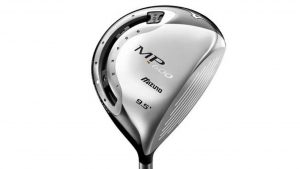
When it comes to drivers, Mizuno’s reputation for irons overshadows its history of producing innovation in the metal woods space. The MP-600 was the very first driver to offer a sliding weight track to fine-tune CG. Although the weights were only 8g a piece is was extremely innovative at the time and created new options for OEMs to help reposition mass around larger heads.
They have utilized the technology on and off over the years, but the newest ST200G is by far the most adjustable Mizuno driver yet.
Graphite (composite) shaft: Golfcraft (1954)
In 1954, Golfcraft (the same Golfcraft discussed here: Greatest Titleist Irons of all Time) announced a breakthrough in golf shaft technology: a shaft made from fiberglass that could one-day make steel obsolete, the same way steel made wood obsolete.
Beyond just the promise of more consistent shots, Golfcraft also declared the shaft vibration-proof, rust-proof, and almost unbreakable, something that modern club throwers would know is quite untrue. Although they never took off like the steel they promised to replace, it was the very first non-steel shaft to enter the market.
Soon after, a few other companies started to enter the market to offer these new fiberglass shafts for golfers, but it wasn’t until the late 1960s when Frank Thomas (yes, the same Frank Thomas that went on to be the technical director of the USGA ) used graphite to produce shafts for Shakespeare—the fishing rod company.
This is when the market completely evolved, and not long after its introduction, graphite shaft manufactures started to pop up to get into the game. Thanks to a better understanding of materials, and the physics of the golf swing with the help of highspeed camera and tracking tools, graphite shafts have never been more advanced than they are today.
Carbon composite crown: Mizuno MP-001 (2003)
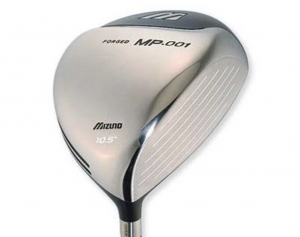
The Mizuno MP-001 was released the year after the much talked about, but often ridiculed, Callaway C4—the very first (and only) carbon composite driver. It came in three different models released in succession; 360cc, 400cc, and then eventually 460cc, which if you are on the lookout for a value, the 460cc driver is still high on the list.
Beyond what Callaway was up to with Fusion Technology, the MP-001 was the very first driver to utilize a multi-material crown to save weight, and the results speak for themselves. It sounds extremely solid, offered low spin, boosted MOI—and looked really cool too.
Multilayer solid core urethane ball
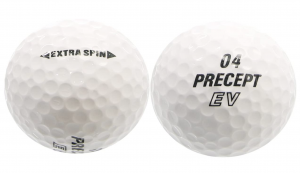
This is the one breakthrough that has a hard-to-find solid start date—no pun intended. The first multilayer performance balls were the Precept (Bridgestone brand) EV Extra Spin and Extra Distance. At the time of its introduction around 1995, the Precept EV was competing against the Titleist Professional, which was still a wound ball. The EV offered more distance and great control while still not quite competing from a short game control perspective.

The biggest mainstream change came when Mark O’Meara won the 1998 Masters with a multi-layer Strata ball and then went on to win the Open Championship the same year. Many attribute his win in part to the fact that he was using a new Strata multi-layer urethane ball that offered less spin off the driver and more spin around the greens.
A year later, in 1999, a year before Titleist introduced the Pro V1 (October 2000), Nike launched the Tour Accuracy ball (manufactured by Bridgestone), and with it came this…
Soon after, the Pro V1 arrived, and as the market leader, the impact was a seismic shift. The wound ball was officially dead, but we can’t forget the change that Precept/Bridgestone pioneered half a decade before.
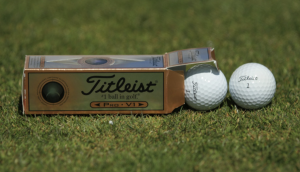
What other “firsts” of the golf industry do you think are notable, GolfWRXers?
- LIKE256
- LEGIT42
- WOW8
- LOL5
- IDHT4
- FLOP2
- OB3
- SHANK16
Equipment
Coolest thing for sale in the GolfWRX Classifieds (4/18/24): Ping PLD Limited Anser – 1988 Open Championship – #2 of only 88 Made
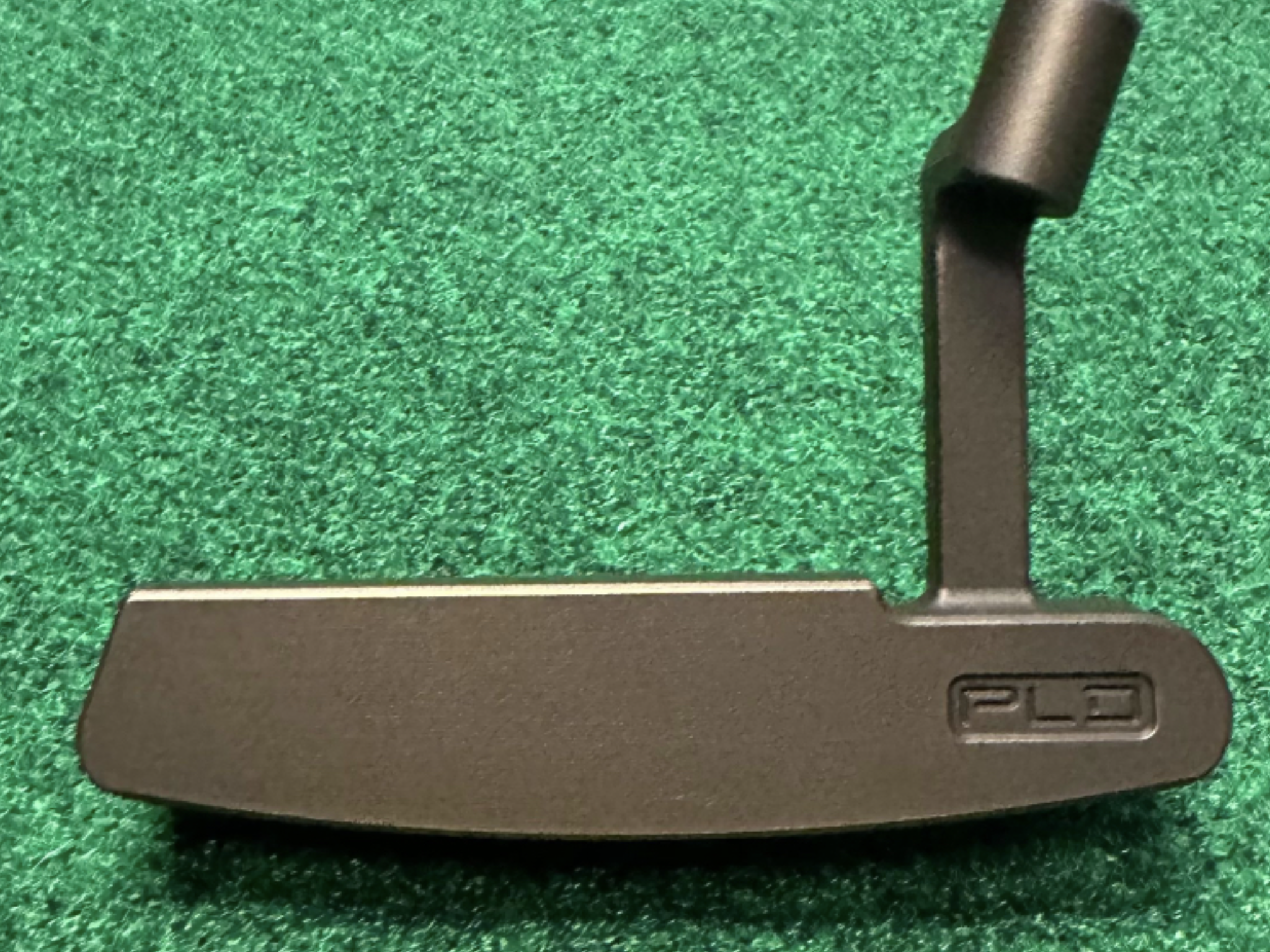
At GolfWRX, we are a community of like-minded individuals that all experience and express our enjoyment of the game in many ways.
It’s that sense of community that drives day-to-day interactions in the forums on topics that range from best driver to what marker you use to mark your ball. It even allows us to share another thing we all love – buying and selling equipment.
Currently, in our GolfWRX buy/sell/trade (BST) forum, there is a listing for a Ping PLD Limited Anser – 1988 Open Championship – #2 of only 88 Made.
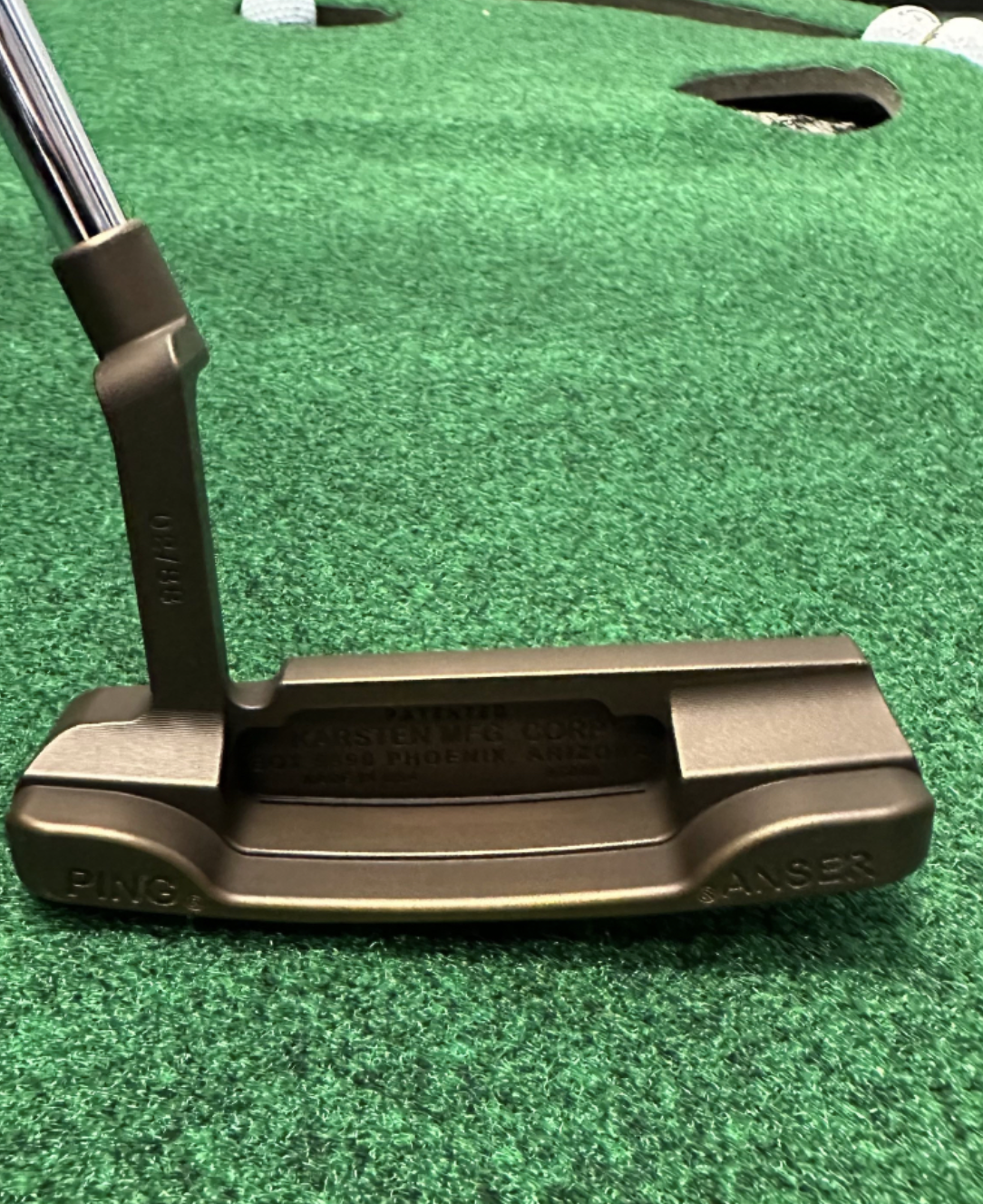
From the seller: (@DLong72): “Ping PLD Limited Anser – 1988 Open Championship – #2 of only 88 Made. ?: $1150. ?? 100% milled collectors item from the limited releases commemorating when Ping putters won every major in 1988 (88 putters made). This was the model Seve Ballesteros used to win the 1988 Open Championship. Condition is brand new, never gamed, everything is in the original packaging as it came. Putter features the iconic sound slot.
Specs/ Additional Details
-100% Milled, Aluminum/Bronze Alloy (310g)
-Original Anser Design
-PING PP58 Grip
-Putter is built to standard specs.”
To check out the full listing in our BST forum, head through the link: Ping PLD Limited Anser – 1988 Open Championship – #2 of only 88 Made
This is the most impressive current listing from the GolfWRX BST, and if you are curious about the rules to participate in the BST Forum you can check them out here: GolfWRX BST Rules
- LIKE0
- LEGIT0
- WOW0
- LOL0
- IDHT0
- FLOP0
- OB0
- SHANK0
Equipment
Inside Collin Morikawa’s recent golf ball, driver, 3-wood, and “Proto” iron changes
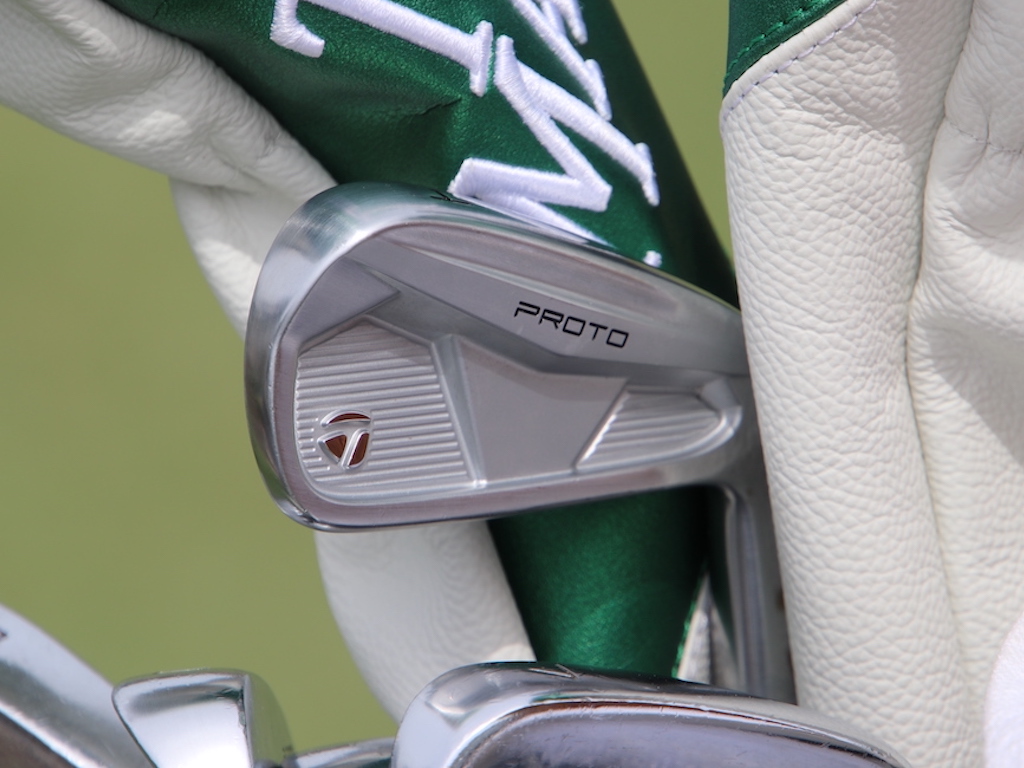
As you probably know by now, Collin Morikawa switched putters after the first round of The Masters, and he ultimately went on to finish T3.
The putter was far from the only change he made last week, however, and his bag is continuing to change this week at the 2024 RBC Heritage.
On the range of The Masters, Morikawa worked closely with Adrian Reitveld, TaylorMade’s Senior Manager of Tour at TaylorMade, to find the perfect driver and 3-wood setups.
Morikawa started off 2024 by switching into TaylorMade’s Qi10 Max driver, but since went back to his faithful TaylorMade SIM – yes, the original SIM from 2020. Somehow, some way, it seems Morikawa always ends up back in that driver, which he used to win the 2020 PGA Championship, and the 2021 Open Championship.
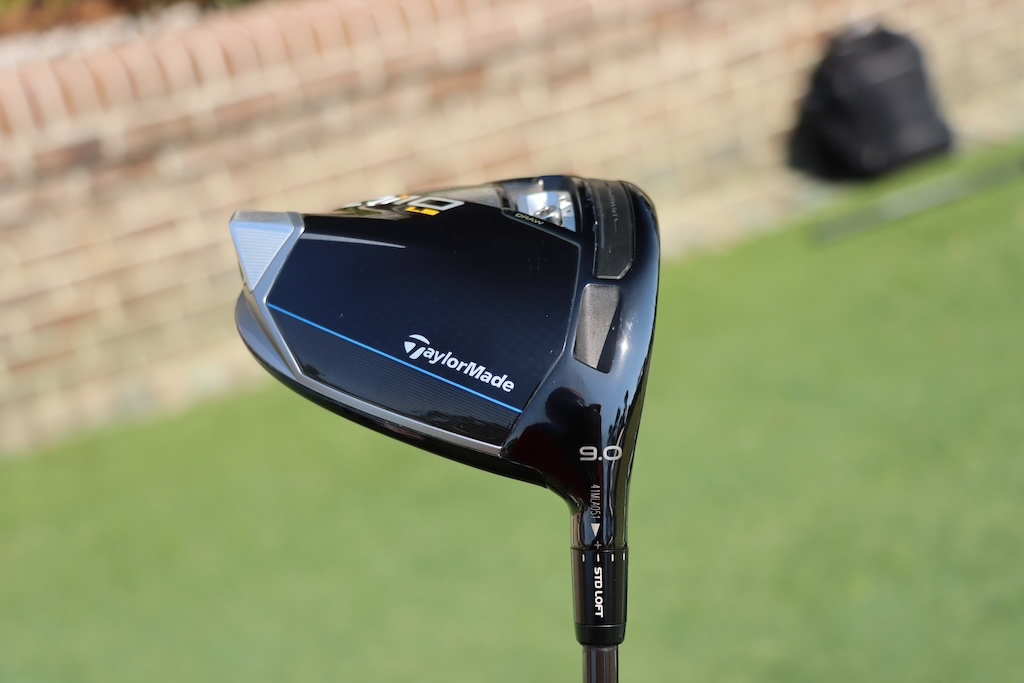
At The Masters, however, Rietveld said the duo found the driver head that allowed “zero compromise” on Morikawa’s preferred fade flight and spin. To match his preferences, they landed on a TaylorMade Qi10 LS 9-degree head, and the lie angle is a touch flatter than his former SIM.
“It’s faster than his gamer, and I think what we found is it fits his desired shot shape, with zero compromise” Rietveld told GolfWRX.com on Wednesday at the RBC Heritage.
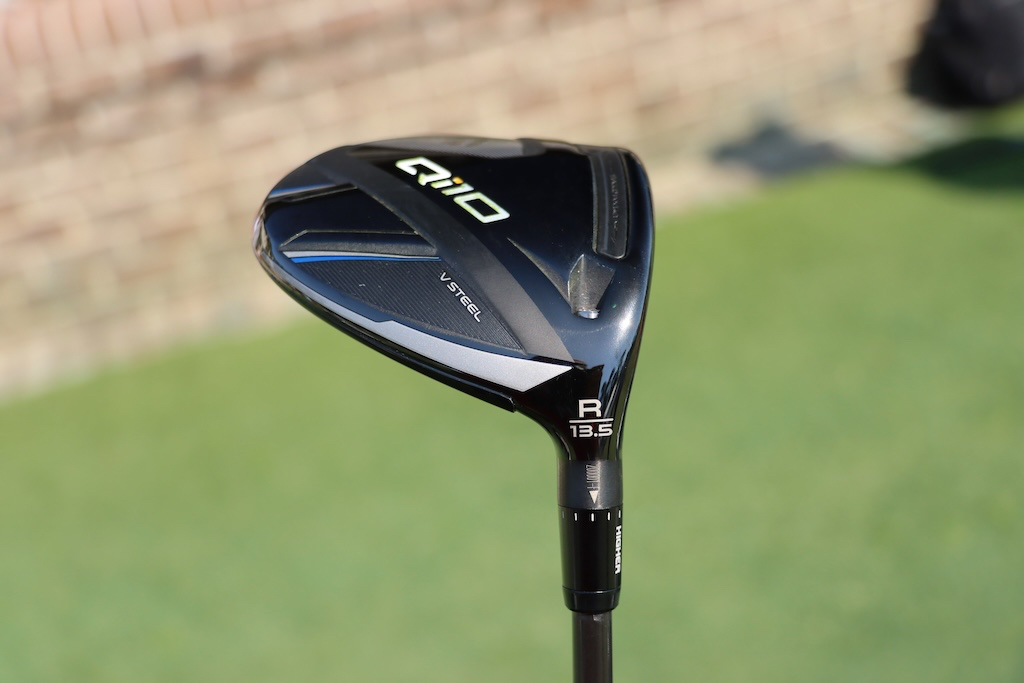
Then, to replace his former SIM rocket 3-wood, Morikawa decided to switch into the TaylorMade Qi10 core model 13.5-degree rocket head, with an adjustable hosel.
“He likes the spin characteristics of that head,” Rietveld said. “Now he’s interesting because with Collin, you can turn up at a tournament, and you look at his 3-wood, and he’s changed the setting. One day there’s more loft on it, one day there’s less loft on it. He’s that type of guy. He’s not scared to use the adjustability of the club.
“And I think he felt our titanium head didn’t spin as low as his original SIM. So we did some work with the other head, just because he liked the feel of it. It was a little high launching, so we fit him into something with less loft. It’s a naughty little piece of equipment.”

In addition to the driver and fairway wood changes, Morikawa also debuted his new “MySymbol” jersey No. 5 TP5x golf ball at The Masters. Morikawa’s choice of symbols is likely tied to his love of the Los Angeles Dodgers baseball team.
Not enough changes for you? There’s one more.

On Wednesday at the 2024 RBC Heritage, Morikawa was spotted with a new TaylorMade “Proto” 4-iron in the bag. If you recall, it’s the same model that Rory McIlroy debuted at the 2024 Valero Texas Open.
According to Morikawa, the new Proto 4-iron will replace his old P-770 hollow-bodied 4-iron.
“I used to hit my P-770 on a string, but sometimes the distance would be a little unpredictable,” Morikawa told GolfWRX.com. “This one launches a touch higher, and I feel I can predict the distance better. I know Rory replaced his P-760 with it. I’m liking it so far.”
See Morikawa’s full WITB from the 2024 RBC Heritage here.
- LIKE23
- LEGIT2
- WOW1
- LOL3
- IDHT1
- FLOP1
- OB2
- SHANK1
Equipment
Why Rory McIlroy will likely use the new TaylorMade BRNR Mini Driver Copper at the RBC Heritage
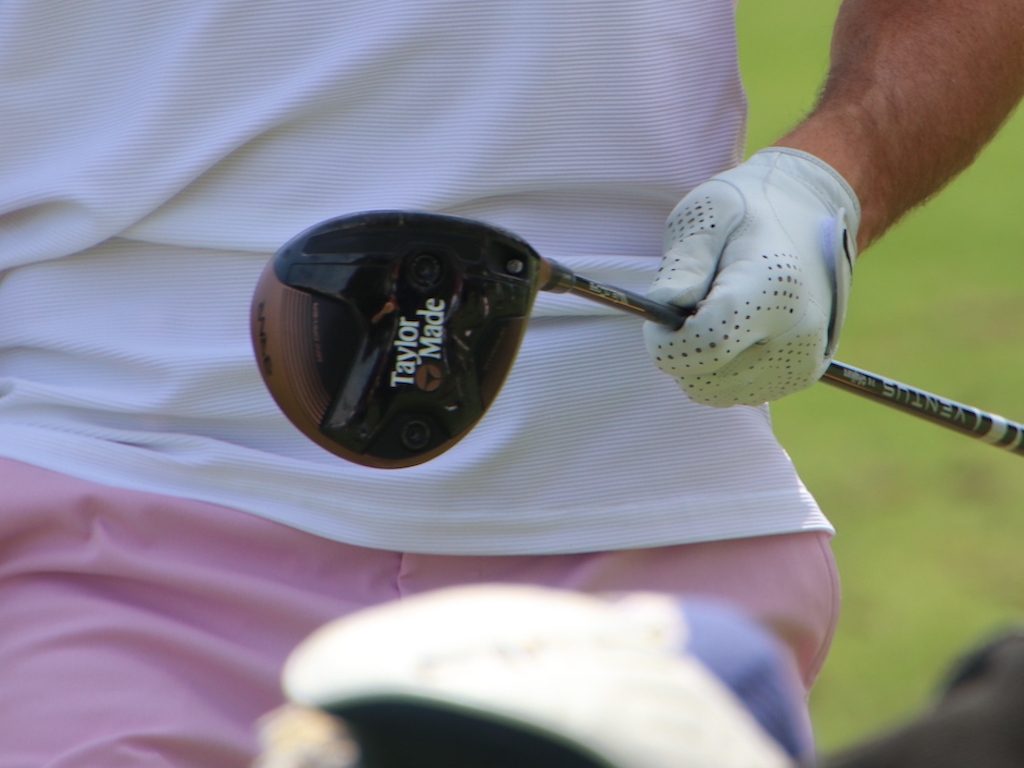
Although we spotted Rory McIlroy testing the new TaylorMade BRNR Mini Driver Copper last week during practice rounds at the Masters, he ultimately didn’t decide to use the club in competition.
It seems that will change this week at the 2024 RBC Heritage, played at the short-and-tight Harbour Town Golf Links in Hilton Head.
When asked on Wednesday following his morning Pro-Am if he’d be using the new, nostalgic BRNR Copper this week, McIlroy said, “I think so.”
“I like it,” McIlroy told GolfWRX.com on Tuesday regarding the BRNR. “This would be a good week for it.”
View this post on Instagram
According to Adrian Rietveld, the Senior Manager of Tour at TaylorMade, the BRNR Mini Driver can help McIlroy position himself properly off the tee at the tight layout.
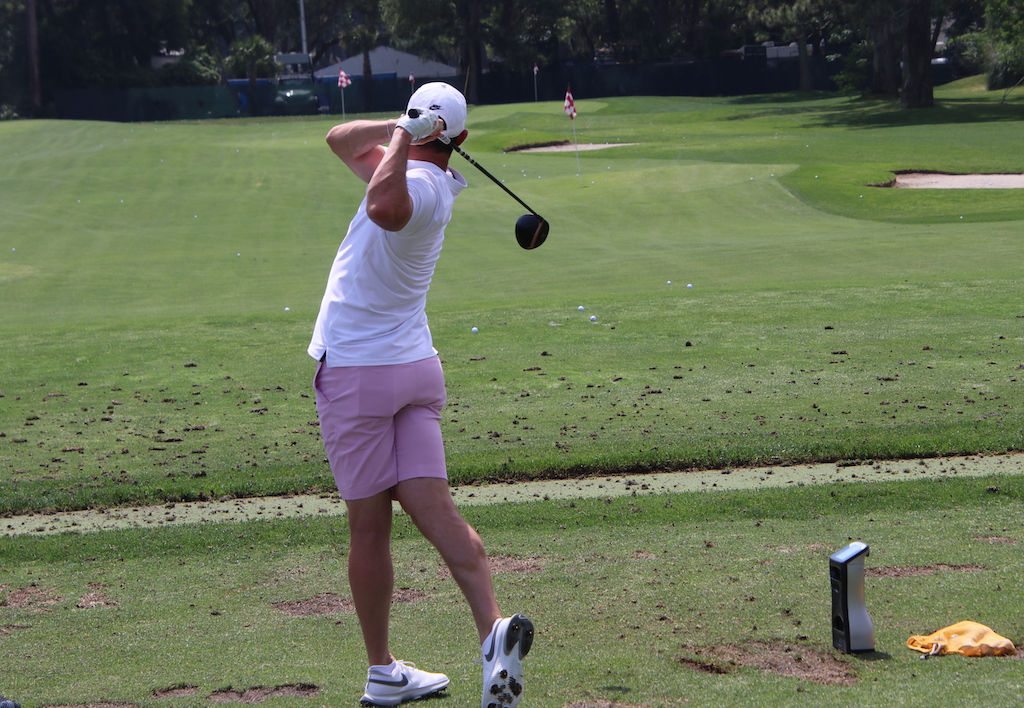
Here’s what Rietveld told GolfWRX.com on Wednesday:
“For someone like Rory, who’s that long at the top end of the bag, and then you put him on a course like Harbour Town, it’s tough off the tee. It’s tight into the greens, and you have to put yourself in position off the tee to have a shot into the green. It kind of reminds me of Valderrama in Spain, where you can be in the fairway and have no shot into the green.
“I’m caddying for Tommy [Fleetwood] this week, so I was walking the course last night and looking at a few things. There’s just such a small margin for error. You can be standing in the fairway at 300 yards and have a shot, but at 320 you don’t. So if you don’t hit a perfect shot, you could be stuck behind a tree. And then if you’re back at 280, it might be a really tough shot into the small greens.
“So for Rory [with the BRNR], it’s a nice course-specific golf club for him. He’s got both shots with it; he can move it right-to-left or left-to-right. And the main thing about this club has been the accuracy and the dispersion with it. I mean, it’s been amazing for Tommy.
“This was the first event Tommy used a BRNR last year, and I remember talking to him about it, and he said he couldn’t wait to play it at Augusta next year. And he just never took it out of the bag because he’s so comfortable with it, and hitting it off the deck.
“So you look at Rory, and you want to have the tools working to your advantage out here, and the driver could hand-cuff him a bit with all of the shots you’d have to manufacture.”
So, although McIlroy might not be making a permanent switch into the new TaylorMade BRNR Mini Driver Copper, he’s likely to switch into it this week.
His version is lofted at 13.5 degrees, and equipped with a Fujikura Ventus Black 7X shaft.
See more photos of Rory testing the BRNR Mini here
- LIKE24
- LEGIT1
- WOW0
- LOL2
- IDHT0
- FLOP0
- OB1
- SHANK3
-

 19th Hole1 week ago
19th Hole1 week agoDave Portnoy places monstrous outright bet for the 2024 Masters
-

 19th Hole2 weeks ago
19th Hole2 weeks agoThings got heated at the Houston Open between Tony Finau and Alejandro Tosti. Here’s why
-

 19th Hole1 week ago
19th Hole1 week agoTiger Woods arrives at 2024 Masters equipped with a putter that may surprise you
-

 19th Hole2 weeks ago
19th Hole2 weeks agoReport: Tiger Woods has ‘eliminated sex’ in preparation for the 2024 Masters
-

 19th Hole4 days ago
19th Hole4 days agoTwo star names reportedly blanked Jon Rahm all week at the Masters
-

 19th Hole3 days ago
19th Hole3 days agoNeal Shipley presser ends in awkward fashion after reporter claims Tiger handed him note on 8th fairway
-

 19th Hole2 days ago
19th Hole2 days agoReport: LIV Golf identifies latest star name they hope to sign to breakaway tour
-

 19th Hole2 weeks ago
19th Hole2 weeks agoAddiction, spinal fusion, and scam artists – Everything Anthony Kim revealed in candid interview with David Feherty




























Delbert
May 31, 2020 at 10:45 pm
The first sand wedge by Gene Sarazen
Psarro
May 29, 2020 at 11:15 pm
I would think range finders should be on the list?
storm319
May 18, 2020 at 11:40 pm
Correction: The Precept EV Extra Spin was a 2-piece with a TPU cover. The first multilayer solid core ball was the Top Flite Strata in 1996 (cover was synthetic, but not urethane).
arnaud
May 16, 2020 at 4:28 pm
Tom Wishon (for SNAKE EYES, GOLFSMITH then WISHON GOLF) :
1st driver with adjustable hosel sleeve (1994)
1st heel weighted / draw bias driver (1996)
1st metal wood with cup face construction (1997)
1st driver with moveable weight for CG / draw / fade bias (2005)
1st illegal driver to achieve a COR of 0.900 (2006)
1st fairway wood to achieve a COR of 0.830 (2004)
1st hybrid to achieve a COR of 0.830 (2008)
1st set of irons to achieve a COR of 0.830 (2009)
and this is a short list …
andrew_s
May 14, 2020 at 5:18 am
COBRA E9 face technology (dual roll)
ColinKelvin
May 13, 2020 at 11:54 am
Ping Anser – a headshape with bumpers and a plumber’s neck which has been #1 in golf ever since, copied by all the leading putter makers over and over and over again.
Ping irons – peripheral weighting / game improvement through the ages.
Jin Teh
May 13, 2020 at 9:40 am
You missed the world’s first two piece ball…the first non core wound golf ball…Dunlop
DDH around 1980…I was the first to break the ball in half on with a driver!!!
Another first bring launched today…Face thickness fitting…drivers with different face thickness for different swing speeds 20-40 yards more 1st swing..who cares if they are not USGA Conforming…go to http://www.krankgolf.com
Delbert
May 31, 2020 at 10:41 pm
My college golf team was given the DDH. They were workin out great until some started break in half.
D
May 13, 2020 at 9:21 am
Ping putters
Ping irons
Adjustable hosels, who started that?
Ping Hoofer with dual strap
J-Dog
May 12, 2020 at 7:08 pm
I thought the Callaway C4 would technically be the first driver to have a carbon crown.
Nicklaus#1
May 12, 2020 at 1:09 pm
I could of sworn Northwestern made the 1st metal driver.
alexva
May 12, 2020 at 11:51 am
Precept Flying Lady was hot for a while among better men players
matt
May 14, 2020 at 7:43 am
haha i remember that
Brandon
May 11, 2020 at 11:23 pm
How about that powerbilt driver with the nitrogen inside?
Stanley
May 11, 2020 at 10:52 pm
Pxg and their foam filled irons
Jack
May 12, 2020 at 8:20 am
Not a first . Taylor made , and maybe even someone before that.
Nack Jicklaus
May 31, 2020 at 4:35 pm
And their woods were foam filled before they made the foam filled irons too.
C
May 11, 2020 at 9:52 pm
Scotty Cameron Putter Headcovers changed everything in what a headcover could be…seems trivial but he certainly upped the ante…Inspired a whole new generation of designers over the years in the process!
Holla
May 11, 2020 at 7:47 pm
Pedersen began making metal headed woods back in 1927.
KP
May 11, 2020 at 7:45 pm
Let’s not forget PING and the innovation of perimeter weighted irons!
Steve
May 13, 2020 at 9:24 am
This!!
Daniel Howard
May 11, 2020 at 7:22 pm
Spalding Tour Edition
Gary
May 13, 2020 at 11:46 am
Yep, first urethane cover.
Think A. Little
May 11, 2020 at 6:12 pm
First driver with removable/sliding weight???
Whoever used lead tape first on whatever they were using.
Eric Seatvet
May 11, 2020 at 6:05 pm
Adams Golf – Hybrids. They may have not been the first, but they made category big.
BodineJCS
May 11, 2020 at 5:51 pm
Taylormade Golf …founded in Mchenry Illinois , my hometown were I still live … Those were the days …
Lou Cesarek
May 11, 2020 at 2:55 pm
Investment cast irons.
Titleist AC 108 and Ram Accubar .
The Accubar had the largest sweet spot of irons during this time frame .
Regis
May 11, 2020 at 2:50 pm
First rescue (hybrid for non TMAG) Taylormade
Richard Douglas
May 11, 2020 at 2:29 pm
Hogan Edge: the first perimeter-weighted, forged iron
Cleveland VAS 792: the first set of garden tools to be converted into golf clubs
Ping Anser
TM Rocketbladz
Polara Ball
SoftSpikes
Nack Jicklaus
May 11, 2020 at 9:53 pm
I think I was one of about 10 people who thought the VAS irons were beautiful back then! I still laughed out loud when I read your comment though…
dwayne bretzky
May 11, 2020 at 2:18 pm
tough luck for Mizuno making those great innovative moves in the driver industry and really never getting a hold of the market share at all over the years. I have used multiple mizuno drivers over the years and they were all great..I guess this really proves how marketing campaigns help a product.
Nick
May 11, 2020 at 1:29 pm
I think you’d have to include the r11. First white driver, sparked a market frenzy. This club and Taylormade’s marketing made everyone seriously question “Should I be playing a white driver?” It allowed companies to see the success that selling a product predominantly a different color than black or grey. This same idea holds true to Taylormade’s red putters…now Odyssey had their own line of red putters too.
The thing that always makes me chuckle is how they are such masterful marketers. Not only did they convince the golfers around the world that the coolest drivers are white, they flip the market on it’s head and come out with the R1 SPECIAL EDITION BLACK DRIVER! I mean how genius…like it or not they know how to play the game, literally and figuratively!
stam
May 11, 2020 at 6:10 pm
COBRA made the first white driver..
Holla
May 11, 2020 at 7:30 pm
MacGregor made a white driver in the 50’s
Kep
May 11, 2020 at 1:12 pm
I have an old Yonex Super ADX 0 driver with a pressure molded graphite head. I believe this was before the composite Callaway C4 mentioned here but i cant seem to find any info about it.
JIM
May 11, 2020 at 6:21 pm
My wife still has a C4 sitting in the garage, I know for a fact it lasted 2 rounds in her bag….I had to take her out to buy a new driver right away. Also the instructor at the range I use was the first to show us that grip pressure took most of the good away from movable weights in driver heads….his slog-gen the tighter the grip the more money you waste on movable weights in your driver.
Mark M
May 13, 2020 at 9:21 am
That’s exactly the club I was thinking of when I read the C4 listing. I think it was mid to late 90s – came out the same time as the Yonex Super ADX tour Forged cavity back irons which were magic.